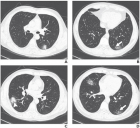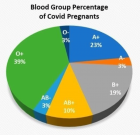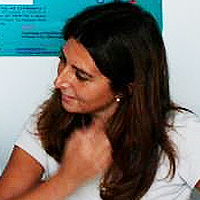Abstract
Review Article
Fish-borne parasites proficient in zoonotic diseases: a mini review
Avishek Bardhan*
Published: 15 March, 2022 | Volume 6 - Issue 1 | Pages: 005-012
Fish-borne parasitic zoonoses are primarily found in people living in developing and underdeveloped countries. The parasites that cause such zoonoses like Trichinella and Taenia are well-known in developed nations, but few people are familiar with fish-borne parasitic zoonoses, which are largely caused by helminths and protozoans. In general, parasitic zoonoses transmitted by fish are rarely life-threatening, although cases and reports of such infestations have increased over the world. The list of parasitic organisms is extensive. This article attempts to provide a complete overview of the many fish-borne parasites that can cause zoonosis among humans and animals alike.
Read Full Article HTML DOI: 10.29328/journal.ivs.1001035 Cite this Article Read Full Article PDF
Keywords:
Zoonoses; Parasite; Fish; Trematode; Cestode; Nematode; Protozoans
References
- Tumbarski Y. Foodborne zoonotic agents and their food bioterrorism potential: a review. Bulgarian J Vet Med. 2020; 23.
- Pal M, Ayele Y. Emerging Role of Foodborne Viruses in Public Health. Bio Res. 2020; 5: 01-04.
- Chai JY, Murrell KD, Lymbery AJ. Fish-borne parasitic zoonoses: status and issues. Int J Parasitol. 2005; 35: 1233-1254. PubMed: https://pubmed.ncbi.nlm.nih.gov/16143336/
- Chen M, Lu Y, Hua X, Mott KE, World Health Organization. Progress in assessment of morbidity due to Clonorchissinensis infection: a review of recent literature. World Health Organization. 1994.
- Rim HJ, Steele JH. CRC Handbook Series in Zoonoses, Section C: Parasitic Zoonoses, CRC Press, Florida, 1982; 53-69.
- MacLean JD, Ward BJ, Kokoskin E, Arthur JR, Gyorkos TW, et al. Common-source outbreak of acute infection due to the North American liver fluke Metorchis conjunctus. Lancet. 1996; 347: 154-158. PubMed: https://pubmed.ncbi.nlm.nih.gov/8544550/
- Xu L, Jiang Z, Yu S, Xu S, Huang D, et al. Nationwide survey of the distribution of human parasites in China-infection with parasite species in human population. Chine J Parasitol Parasitic Dis. 1995; 13: 1-7. PubMed: https://pubmed.ncbi.nlm.nih.gov/7788888/
- Hong ST, Fang Y. Clonorchissinensis and clonorchiasis, an update. Parasitol Int. 2012; 61: 17-24. PubMed: https://pubmed.ncbi.nlm.nih.gov/21741496/
- Yossepowitch O, Gotesman T, Assous M, Marva E, Zimlichman R, et al. Opisthorchiasis from imported raw fish. Emerg Infect Dis. 2004; 10: 2122-2126. PubMed: https://pubmed.ncbi.nlm.nih.gov/15663848/
- Sripa B, Tangkawattana S, Brindley PJ. Update on pathogenesis of opisthorchiasis and cholangiocarcinoma. Adv Parasito. 2018; 12: 97-113. PubMed: https://pubmed.ncbi.nlm.nih.gov/30442312/
- Kiyan VS, Bulashev AK, Katokhin AV. Opisthorchisfelineus and Metorchisbilis metacercariae in cyprinid fish Leuciscusidus in Nura-Sarysu River, Kazakhstan. Korean J Parasitol. 2018; 56: 267. PubMed: https://pubmed.ncbi.nlm.nih.gov/29996630/
- Chai JY, Lee SH. Food-borne intestinal trematode infections in the Republic of Korea. Parasitol Int. 2002; 51: 129-154. PubMed: https://pubmed.ncbi.nlm.nih.gov/12113752/
- Clausen JH, Madsen H, Van PT, Dalsgaard A, Murrell KD. Integrated parasite management: path to sustainable control of fishborne trematodes in aquaculture. Trends Parasitol. 2015; 31: 8-15. PubMed: https://pubmed.ncbi.nlm.nih.gov/25466608/
- Chai JY, Jung BK. Fishborne zoonotic heterophyid infections: an update. Food Waterborne Parasitol.2017; 8: 33-63. PubMed: https://pubmed.ncbi.nlm.nih.gov/32095640/
- Silachamroon U, Wattanagoon Y. Paragonimiasis. In Hunter's Tropical Medicine and Emerging Infectious Diseases, Edn 10, Elsevier. 2020; 928-931.
- Scholz T, Kuchta R. Fish-borne, zoonotic cestodes (Diphyllobothrium and relatives) in cold climates: a never-ending story of neglected and (re)-emergent parasites. Food Waterborne Parasitol. 2016; 4: 23-38.
- Yera H, Kuchta R, Brabec J, Peyron F, Dupouy-Camet J. First identification of eggs of the Asian fish tapeworm Bothriocephalusacheilognathi (Cestoda: Bothriocephalidea) in human stool. Parasitol Int. 2013; 62: 268-271. PubMed: https://pubmed.ncbi.nlm.nih.gov/23422154/
- Dupouy-Camet JE, Peduzzi R. Current situation of human diphyllobothriasis in Europe. Euro Surveill. 2004; 9: 31-35. PubMed: https://pubmed.ncbi.nlm.nih.gov/15208471/
- Lim H, Jung BK, Cho J, Yooyen T, Shin EH, Chai JY. Molecular diagnosis of cause of anisakiasis in humans, South Korea. Emerg Infect Dis. 2015; 21: 342-344. PubMed: https://pubmed.ncbi.nlm.nih.gov/25625427/
- Aibinu IE, Smooker PM, Lopata AL. Anisakis nematodes in fish and shellfish-from infection to allergies. Int J Parasitol: Parasites Wildl. 2019; 9: 384-393. PubMed: https://pubmed.ncbi.nlm.nih.gov/31338296/
- Diaz JH. Gnathostomiasis: an emerging infection of raw fish consumers in Gnathostoma nematode-endemic and nonendemic countries. J Travel Med. 2015; 22: 318-324. PubMed: https://pubmed.ncbi.nlm.nih.gov/25997919/
- Schuster FL, Visvesvara GS. Amoebae and ciliated protozoa as causal agents of waterborne zoonotic disease. Vet Parasitol. 2004; 126: 91-120. PubMed: https://pubmed.ncbi.nlm.nih.gov/15567581/
- Ghoneim NH, Abdel-Moein KA, Saeed H. Fish as a possible reservoir for zoonotic Giardia duodenalis Parasitol Res. 2012; 110: 2193-2196. PubMed: https://pubmed.ncbi.nlm.nih.gov/22160281/
- Ryan U, Hijjawi N, Xiao L. Foodborne cryptosporidiosis. Int J Parasitol. 2018; 48: 1-2. PubMed: https://pubmed.ncbi.nlm.nih.gov/29122606/
- Zahedi A, Paparini A, Jian F, Robertson I, Ryan U. Public health significance of zoonotic Cryptosporidium species in wildlife: critical insights into better drinking water management. Int J Parasitol. 2016; 5: 88-109. PubMed: https://pubmed.ncbi.nlm.nih.gov/28560163/
- Mathis A, Weber R, Deplazes P. Zoonotic potential of the Microsporidia. Clin Microbiol Rev. 2005; 18: 423-445. PubMed: https://pubmed.ncbi.nlm.nih.gov/16020683/
- Leiro JM, Piazzon C, Domínguez B, Mallo N, Lamas J. Evaluation of some physical and chemical treatments for inactivating microsporidian spores isolated from fish. Int J Food Microbiol. 2012; 156: 152-160. PubMed: https://pubmed.ncbi.nlm.nih.gov/22503551/
- Santos HM, Tsai CY, Maquiling KR, Tayo LL, Mariatulqabtiah AR, Lee CW, Chuang KP. Diagnosis and potential treatments for acute hepatopancreatic necrosis disease (AHPND): a review. Aquaculture Int. 2020; 28: 169-185. PubMed: https://www.ncbi.nlm.nih.gov/pmc/articles/PMC7223513/
- The World Health Organization. Report of the 4th International Meeting, ‘The control of Neglected Zoonotic Diseases: From advocacy to action’. 2014.
Figures:
Similar Articles
-
Zoonotic potential of Giardia lamblia and control of giardiasisMaria Fantinatti*. Zoonotic potential of Giardia lamblia and control of giardiasis. . 2019 doi: 10.29328/journal.ivs.1001013; 3: 001-004
-
Prevalence and seasonal variations of eggs of gastrointestinal nematode parasites of goats from smallholder farms in MozambiqueAlsácia Atanásio-Nhacumbe*,Carlos Francisco Sitoe. Prevalence and seasonal variations of eggs of gastrointestinal nematode parasites of goats from smallholder farms in Mozambique. . 2019 doi: 10.29328/journal.ivs.1001016; 3: 023-029
-
Clinical presentation, diagnosis and therapeutic management of Dipylidium caninum (Cestoda: Dilepididae) infection in a domestic cat (Felis catus): a case reportMd. Shahadat Hossain,Ausraful Islam,Sharmin Shahid Labony,Md. Mokbul Hossain,Md. Abdul Alim,Anisuzzaman*. Clinical presentation, diagnosis and therapeutic management of Dipylidium caninum (Cestoda: Dilepididae) infection in a domestic cat (Felis catus): a case report. . 2021 doi: 10.29328/journal.ivs.1001032; 5: 024-025
-
Collection and evaluation of indigenous buck semen at the coastal region of BangladeshMahfuza Swarna,Nani Gopal Saha,Sukanta Biswas,Ashit Kumar Paul*. Collection and evaluation of indigenous buck semen at the coastal region of Bangladesh. . 2022 doi: 10.29328/journal.ivs.1001034; 6: 001-004
-
Fish-borne parasites proficient in zoonotic diseases: a mini reviewAvishek Bardhan*. Fish-borne parasites proficient in zoonotic diseases: a mini review. . 2022 doi: 10.29328/journal.ivs.1001035; 6: 005-012
-
Review on epidemiology of bovine hemoparasites in EthiopiaGudina Mekonnen Ayana,Wakgari Oljira Fayisa*. Review on epidemiology of bovine hemoparasites in Ethiopia. . 2022 doi: 10.29328/journal.ivs.1001036; 6: 013-016
-
A Perspective on Conservation Technologies for Endangered Marine BirdsAnn Morrison*, Sonja Lukaszewicz. A Perspective on Conservation Technologies for Endangered Marine Birds. . 2023 doi: 10.29328/journal.ivs.1001039; 7: 010-014
Recently Viewed
-
Unusual Complications of a Dental Prosthesis Esophageal Foreign Body: About a CaseRichard Edward Alain Deguenonvo,Ndèye Fatou Thiam*,Mouhamadou Diouldé Diallo,Abdou Sy,Amadou Thiam,Abdoulaye Diop,Mame Sanou Diouf,Baye Karim Diallo. Unusual Complications of a Dental Prosthesis Esophageal Foreign Body: About a Case. Adv Treat ENT Disord. 2025: doi: 10.29328/journal.ated.1001016; 9: 001-004
-
Examining the Effects of High Poverty and Unemployment on Rural Urban Migration in Nigeria and its Consequences on Urban Resources and Rural DeclineTochukwu S Ezeudu*, Bilyaminu Tukur. Examining the Effects of High Poverty and Unemployment on Rural Urban Migration in Nigeria and its Consequences on Urban Resources and Rural Decline. J Child Adult Vaccines Immunol. 2024: doi: 10.29328/journal.jcavi.1001012; 8: 001-013
-
Betty Neuman System Model: A Concept AnalysisAdnan Yaqoob*, Rafat Jan, Salma Rattani and Santosh Kumar. Betty Neuman System Model: A Concept Analysis. Insights Depress Anxiety. 2023: doi: 10.29328/journal.ida.1001036; 7: 011-015
-
Host biomarkers for early diagnosis of infectious diseases: A comprehensive reviewArindam Chakraborty*,Singh Monica. Host biomarkers for early diagnosis of infectious diseases: A comprehensive review. Int J Clin Microbiol Biochem Technol. 2019: doi: 10.29328/journal.ijcmbt.1001005; 2: 001-007
-
Diabetes and red blood cell parametersMd. Sadikuj Jaman*,Md. Sohanur Rahman,Rubaiya Rafique Swarna,Joyanto Mahato,Md. Milon Miah,Mosa. Ayshasiddeka. Diabetes and red blood cell parameters. Ann Clin Endocrinol Metabol. 2018: doi: 10.29328/journal.acem.1001004; 2: 001-009
Most Viewed
-
Impact of Latex Sensitization on Asthma and Rhinitis Progression: A Study at Abidjan-Cocody University Hospital - Côte d’Ivoire (Progression of Asthma and Rhinitis related to Latex Sensitization)Dasse Sery Romuald*, KL Siransy, N Koffi, RO Yeboah, EK Nguessan, HA Adou, VP Goran-Kouacou, AU Assi, JY Seri, S Moussa, D Oura, CL Memel, H Koya, E Atoukoula. Impact of Latex Sensitization on Asthma and Rhinitis Progression: A Study at Abidjan-Cocody University Hospital - Côte d’Ivoire (Progression of Asthma and Rhinitis related to Latex Sensitization). Arch Asthma Allergy Immunol. 2024 doi: 10.29328/journal.aaai.1001035; 8: 007-012
-
Causal Link between Human Blood Metabolites and Asthma: An Investigation Using Mendelian RandomizationYong-Qing Zhu, Xiao-Yan Meng, Jing-Hua Yang*. Causal Link between Human Blood Metabolites and Asthma: An Investigation Using Mendelian Randomization. Arch Asthma Allergy Immunol. 2023 doi: 10.29328/journal.aaai.1001032; 7: 012-022
-
An algorithm to safely manage oral food challenge in an office-based setting for children with multiple food allergiesNathalie Cottel,Aïcha Dieme,Véronique Orcel,Yannick Chantran,Mélisande Bourgoin-Heck,Jocelyne Just. An algorithm to safely manage oral food challenge in an office-based setting for children with multiple food allergies. Arch Asthma Allergy Immunol. 2021 doi: 10.29328/journal.aaai.1001027; 5: 030-037
-
Snow white: an allergic girl?Oreste Vittore Brenna*. Snow white: an allergic girl?. Arch Asthma Allergy Immunol. 2022 doi: 10.29328/journal.aaai.1001029; 6: 001-002
-
Cytokine intoxication as a model of cell apoptosis and predict of schizophrenia - like affective disordersElena Viktorovna Drozdova*. Cytokine intoxication as a model of cell apoptosis and predict of schizophrenia - like affective disorders. Arch Asthma Allergy Immunol. 2021 doi: 10.29328/journal.aaai.1001028; 5: 038-040

If you are already a member of our network and need to keep track of any developments regarding a question you have already submitted, click "take me to my Query."




















































































































































